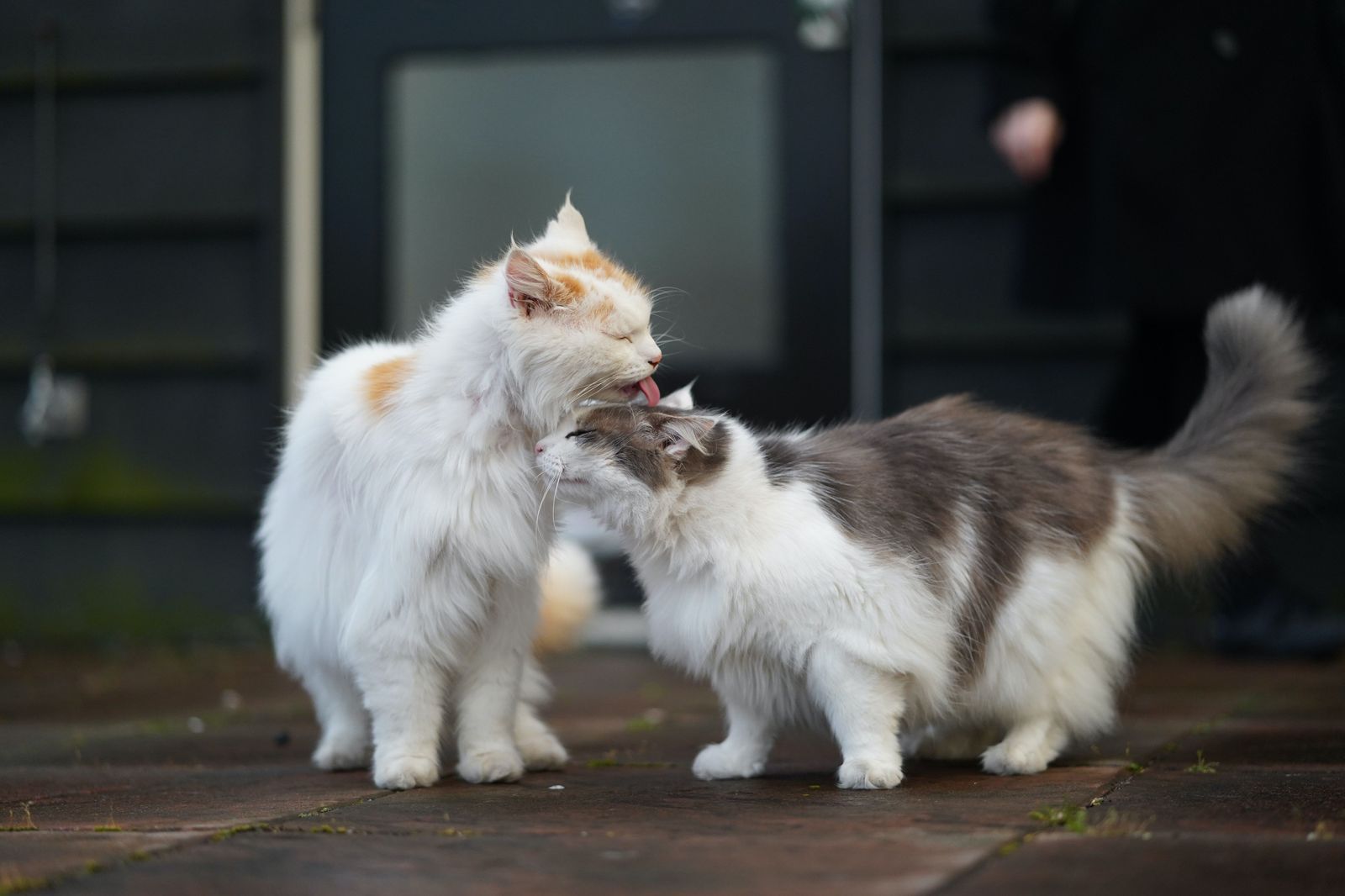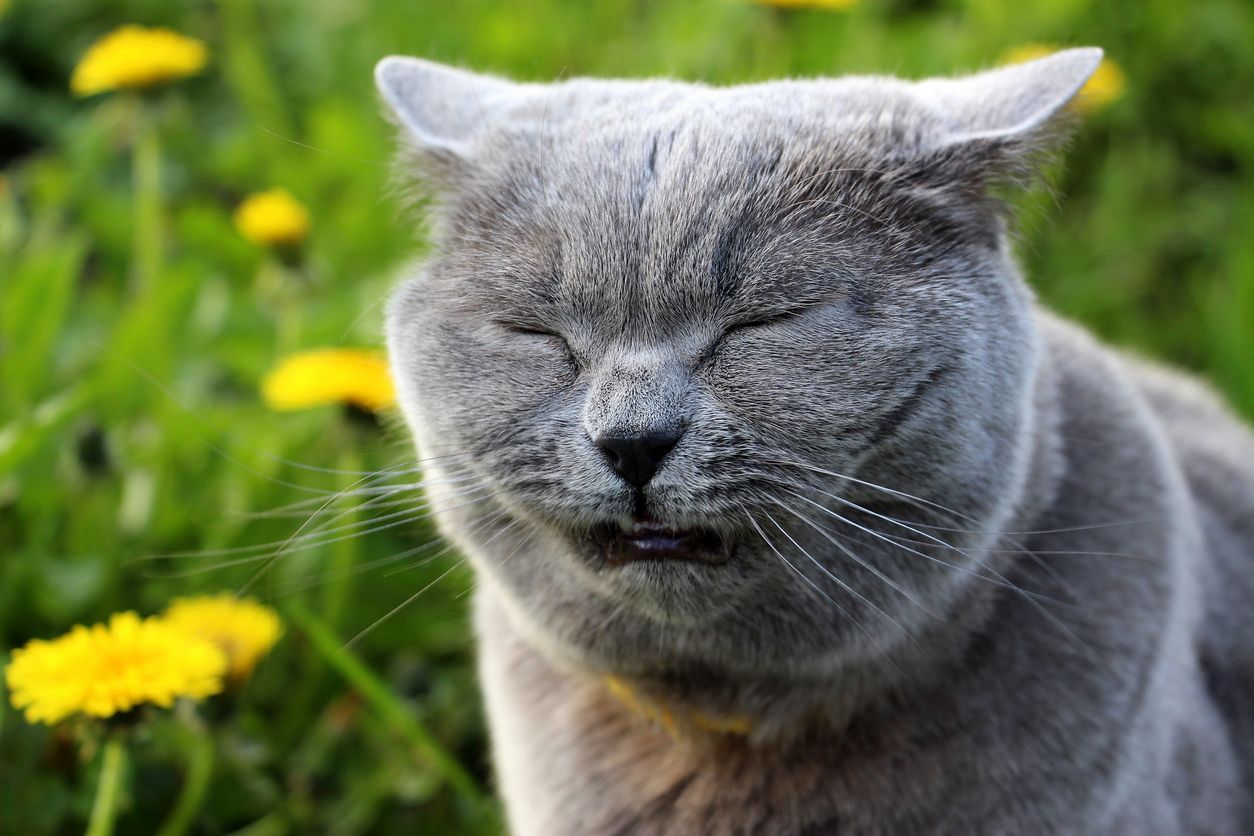When you should worry about hairballs in cats

Hairballs are a well-known annoyance for cats and cat owners everywhere, especially if you have a cat who sheds a lot. Some types of cats tend to get hairballs more than others due to the length of their fur, but even short-haired cats can be prone to hairball struggles. Cat owners are often surprised to learn that although they are common, hairballs are not a normal occurrence in cats. Hairballs are often a sign of a health or behavioral issue that should be addressed.
What is a hairball?
Hairballs, also known as trichobezoars, are masses of fur that accumulate in a ball in a cat's digestive tract over time. Generally, a healthy cat’s digestive system should pass the hairball through. The digestive tract might not be able to keep up if your cat has really long hair, so hair gets thrown up from time to time. That’s essentially the only reason a healthy cat will throw up a hairball. Even though occasional hairballs are often not considered a problem by pet owners, you should think twice before you ignore this issue in your cat. Vomiting up hairballs is typically a sign of a health issue that can range from relatively minor to life-threatening. In some cases, your cat may even require surgery to remove a large hairball or fix some other underlying problem that’s causing the hairballs. If your cat is experiencing hairballs, learn more by booking an online virtual care appointment.
Where do hairballs come from?
There are three main causes of hairballs in cats:
1- Overgrooming
The barbs on your cat’s tongue that allow them to effectively clean their fur also cause them to swallow loose fur during the grooming process. Grooming is a healthy behavior, but overgrooming can lead to your cat ingesting too much fur. Overgrooming can happen if your kitty is stressed, in pain, bored, anxious, or suffering from underlying illnesses ranging from urinary tract disease to arthritis.
2- Not grooming enough
Some cats may accumulate more loose fur than they can adequately groom themselves. Long-haired cat breeds can be twice as likely to get hairballs than short-haired cats. If you don’t remove the extra dead, loose fur from your cat regularly through brushing or bathing, they will ingest it as they try to groom themselves.
3- Illness that interferes with the normal function of the digestive tract
If your cat throws up hairballs with any regularity, it’s time for your vet to do some detective work.
Even though it’s scary to consider, throwing up hairballs may be a symptom of serious medical conditions like cancer. Even if the underlying cause is not serious, it is best to investigate repeated regurgitation of hairballs so your cat has the best possible quality of life. Overgrooming will stop if the underlying cause is identified and addressed. With successful management of digestive disorders like inflammatory bowel disease, your cat will stop having hairballs - or at least they will have fewer. The bottom line is you shouldn’t assume it’s normal for your cat to have frequent hairballs. Talk to a vet to determine the best plan to put an end to this symptom of potentially serious diseases.
How to prevent hairballs from becoming a problem
- Groom your cat regularly
Groom long-haired cats once per day and short-haired cats about once per week with a brush. Specialty fur-removing brushes are available for cats who shed more than normal and need extra assistance in removing their dead fur.
- Keep your cat mentally stimulated
Providing additional stimulation for your cat can help alleviate boredom and anxiety that may lead to overgrooming and hairballs. Assess your cat's environment and consider adding new toys, games, or habitats for them to explore.
- See your vet regularly
Seeing your vet at least once a year and keeping up with routine preventive healthcare like vaccinations, deworming, and dental hygiene is the best way to avoid the preventable diseases that can contribute to hairballs.
- Use a hairball lubricant or laxative
Commercial products for hairballs can help to lubricate the hairball and assist in it moving through your cat's digestive system. Consult a veterinarian before using hairball products or laxatives so you avoid masking a serious symptom when you should be taking action to investigate it.
Should you be worried about hairballs?
If your cat is experiencing frequent hairballs, you should seek advice from a vet. Sometimes illnesses, such as parasites, can cause cats to groom themselves excessively and result in more hairballs. In other cases, the cat isn’t grooming any more than normal, but some type of disease is preventing the normal passage of the hair. It can be difficult to determine exactly why your cat is vomiting up hairballs, so it is best to consult a professional to get peace of mind. Some of the other symptoms that cats may display if they have a medical problem causing their hairballs are:
- Vomiting
- Retching
- Gagging
- Loss of appetite and weight loss
- Lethargy
- Diarrhea
- Excessive grooming
- House soiling (accidents outside the litter box)
- Excessive thirst and urination
- And many more…
Keep in mind that some of these symptoms may be signs of other health issues. Book a virtual care appointment with a Vetster online vet who can determine the cause of your cat's symptoms and help to alleviate hairball-related ailments. Vetster operates 24/7 so you can easily book an appointment on your schedule without having to wrangle your cat into a car. Additional online check-ins with a vet can stop problems before they escalate into an emergency, saving you time and money, and ensuring that your cat is healthy and happy.




